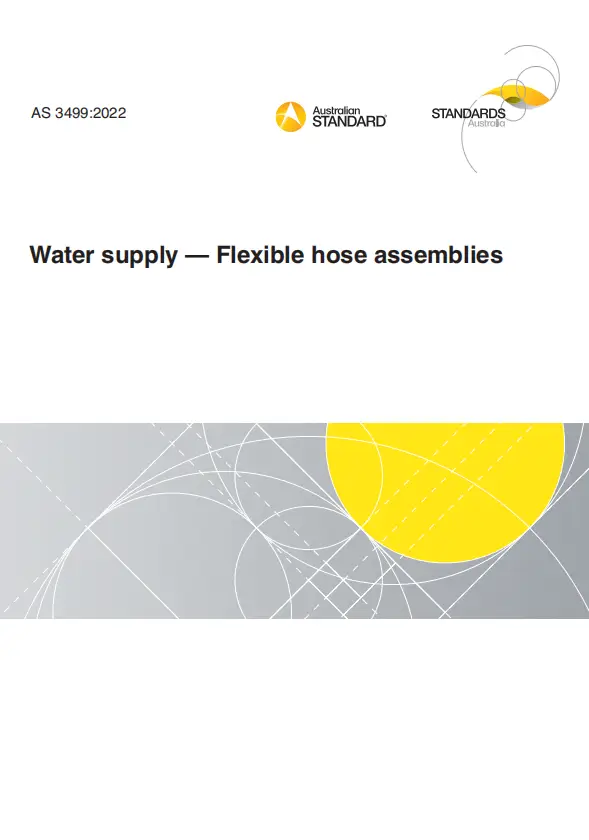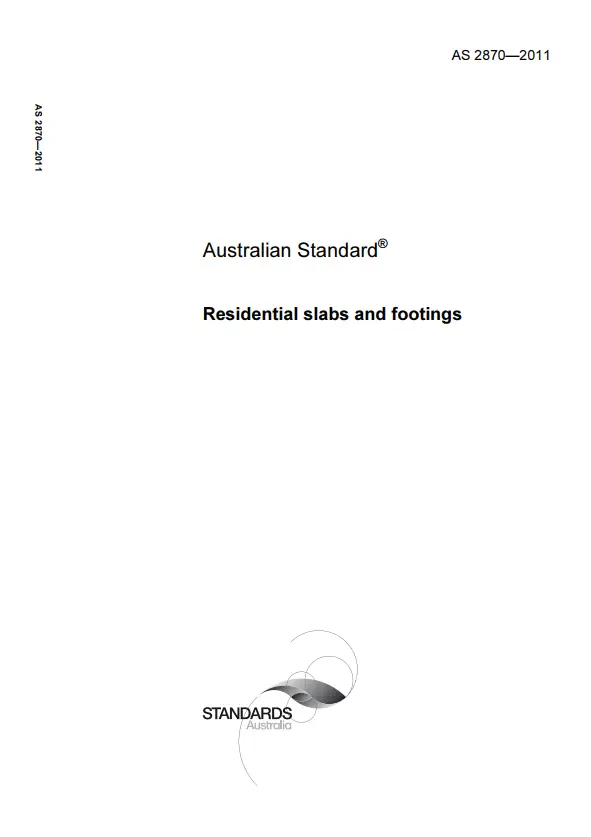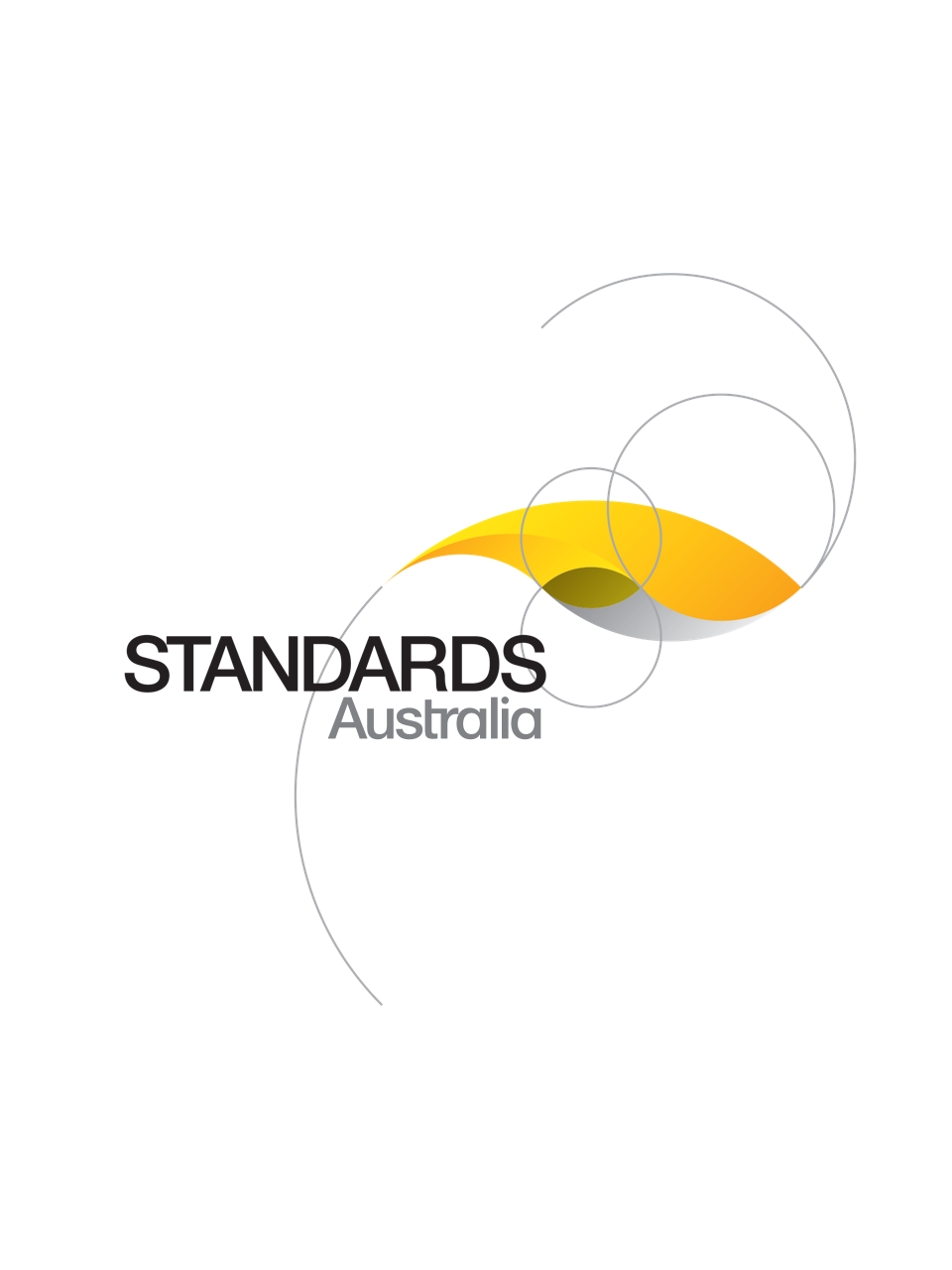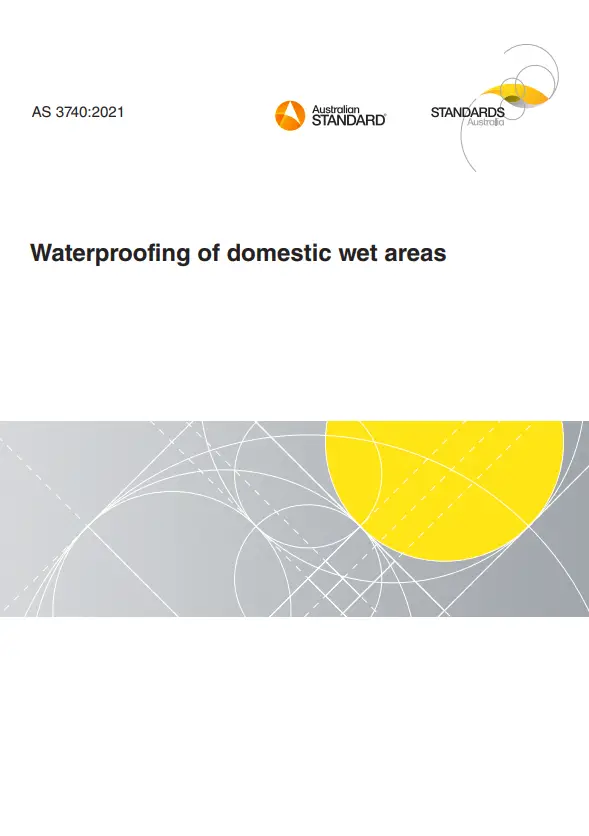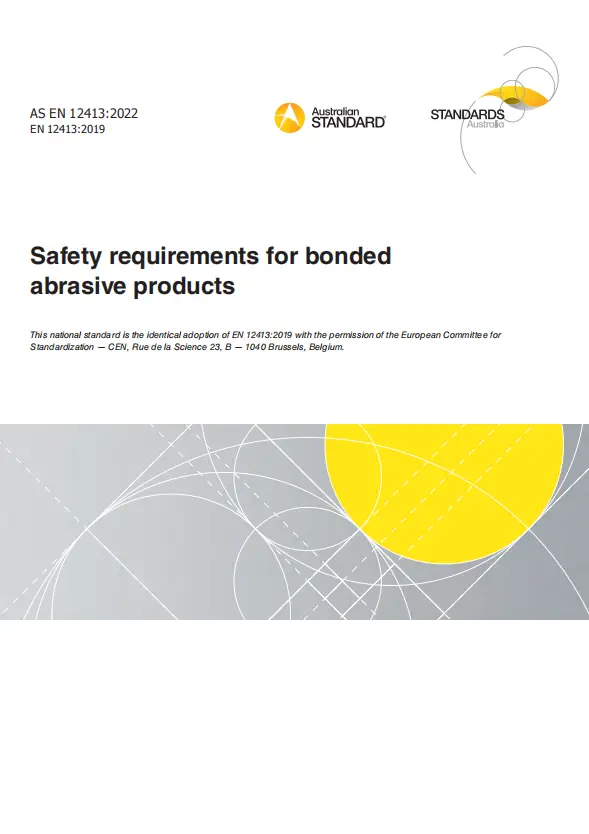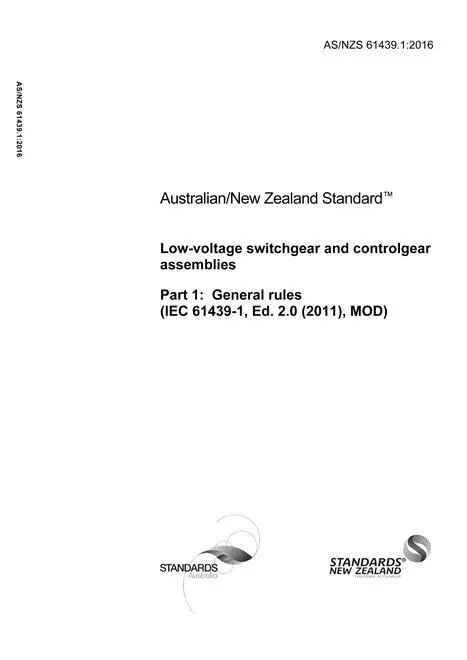AS 3499, 2nd, 2022 – Water supply – Flexible hose assemblies
AS 3499:2022 specifies requirements for flexible hose assemblies for use with both heated water and cold water supplies with a maximum heated water temperature of 90 °C used for applications above ground and accessible. Nominal sizes range up to DN 50, a maximum length of 10 m and with a working pressure not exceeding 1 400 kPa at 20 °C.
General Product Information:
| Committee |
WS-001 |
| Purchase Note |
All current amendments available at time of purchase are included with the purchase of this document |
| Document Type |
PDF |
| ISBN |
978 1 76113 954 3 |
| Pages |
39 |
| Document Language |
English |
| Publisher |
Standards Australia |
| Status |
Current |
Preview
Table of cotents
1 Scope and general
1.1 Scope
1.2 Normative references
1.3 Terms and definitions
1.4 Product conformity
2 Designation
2.1 General
2.2 Sizes
2.2.1 Tube
2.2.2 End connectors
2.2.3 Hose assembly
3 Materials
3.1 General
3.1.1 Corrosion resistance
3.1.2 Contamination of water
3.2 Plastic and elastomeric material
3.2.1 General
3.2.2 Cross-linked polyethylene
3.2.3 Acetal
3.3 Metallic materials
3.3.1 Copper
3.3.2 Copper alloy
3.3.3 Stainless steel
3.4 Seals for end connections and O rings
4 Design
4.1 End connectors
4.1.1 General
4.1.2 Threads
4.1.3 Thread engagement
4.2 Working conditions
4.2.1 Operating temperature
4.2.2 Operating pressure
4.3 Classification
4.4 Marking
5 Product documentation
5.1 General
5.2 Installation instructions
6 Performance requirements
6.1 General
6.2 Watertightness test
6.3 Accelerated ageing by heat treatment test
6.4 Tensile stress resistance test
6.5 Hydraulic pulsation durability test
6.6 Thermal cycling test
6.7 Burst pressure test
6.8 Bending test
6.9 Contamination of water
6.10 Elastomeric materials (tube) — Compression set
6.11 Resistance to corrosion
6.12 Resistance to ultraviolet degradation
6.13 Conformance to specification
Appendix A
A.1 Scope
A.2 Documentation
A.3 Type testing
A.4 Batch release testing
A.5 Retesting
Appendix B
B.1 Scope
B.2 Test samples
B.3 Watertightness test
B.3.1 Principle
B.3.2 Apparatus
B.3.3 Test samples
B.3.4 Procedure
B.3.4.1 General
B.3.4.2 Measurement of deformation under pressure
B.3.4.2.1 Procedure
B.3.4.2.2 Change in length
B.3.4.2.3 Change in external diameter
B.3.4.2.3.1 Determination by measuring the change in external circumference
B.3.4.2.3.2 Direct measurement of change in external diameter
B.3.5 Test report
B.4 Accelerated ageing by heat treatment test
B.4.1 Principle
B.4.2 Apparatus
B.4.3 Test samples
B.4.4 General
B.4.5 Procedure
B.4.6 Test report
B.5 Tensile stress resistance test
B.5.1 Principle
B.5.2 Apparatus
B.5.3 Test samples
B.5.4 Procedure
B.5.5 Test report
B.6 Hydraulic pulsation durability test
B.6.1 Principle
B.6.2 Apparatus
B.6.3 Test samples
B.6.4 Procedure
B.6.5 Test report
B.7 Burst pressure test
B.7.1 Principle
B.7.2 Apparatus
B.7.3 Test samples
B.7.4 Procedure
B.7.5 Test report
B.8 Thermal cycling test
B.8.1 Principle
B.8.2 Apparatus and reagent
B.8.3 Test samples
B.8.4 Procedure
B.8.5 Test report
B.9 Bending test
B.9.1 Principle
B.9.2 Apparatus
B.9.3 Test samples
B.9.4 Procedure
B.9.5 Test report
B.10 Resistance to corrosion
B.10.1 Principle
B.10.2 Apparatus
B.10.3 Test samples
B.10.4 Procedure
B.10.5 Test report
B.11 Resistance to ultraviolet degradation
B.11.1 Principle
B.11.2 Apparatus
B.11.3 Test samples
B.11.4 Procedure
B.11.5 Test report
B.12 Conformance to specification
B.12.1 Principle
B.12.2 Apparatus
B.12.3 Test samples
B.12.4 Procedure
B.12.5 Test report
Bibliography

